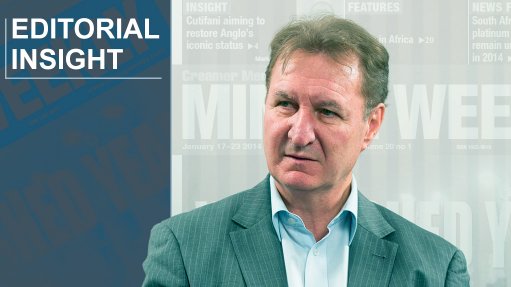
The question of mining companies generating their own electricity has sprung to the fore on the news that Sibanye Gold plans to do just that.
The Johannesburg- and New York-listed company last week announced that it planned to build a R3-billion, 150 MW solar power plant and also undertake an in-depth investigation into the feasibility of its own coal-fired power stations contributing an additional 200 MW to 600 MW.
Increasingly unreliable and costly electricity supply from South Africa’s State-owned power utility, Eskom, is the reason Sibanye is planning to do at scale what many South Africans have already been forced to do far less elaborately in their own homes.
Sibanye complained at its latest presentation of results that operational disruption was being accompanied by record-high price tags – a question of load-shedding ‘insult’ adding to high price ‘injury’.
Despite the company succeeding in slashing its power consumption by 20%, its electricity bill has just kept on rising.
What cost R757-million in 2007 costs R3.1-billion now, and what represented 9% of total operating costs eight years ago represents 20% now.
With labour costs accounting for another 55%, Sibanye is now operating with three-quarters of its operating costs beyond its control.
Which is why Sibanye CEO Neal Froneman envisages self- generating in phased 50 MW stages at a site near the company’s deep-level Driefontein gold mine, which will remove 10% of its average daily reliance on the national electricity grid.
Another Johannesburg- and New York-listed gold-mining company, DRDGold, last week also reported losing 67 hours to power outages in December, which, in addition to rainfall, meant a 3% drop to 11.59-million tons of gold tailings going through its East Rand dump recycling plant.
DRDGold CEO Niël Pretorius is not, however, taking any steps to self-generate power at scale, preferring instead to rely on standby power generators to keep thickeners turning during load-shedding, and negotiate agreed lower doses of power during Eskom load- shedding.
DRDGold reduces consumption by 10% during stage one load- shedding and by 20% during stage two load-shedding, which the company says is working for it.
But, overall, inadequate power represents the most serious threat to the economic growth that South Africa desperately needs to alleviate its triple evils of unemployment, inequality and poverty.
The State is clearly to blame for adding to South Africa’s unemployment, inequality and poverty scourges by failing to do the task it gave itself to provide adequate electricity; its dereliction of duty has been so nefarious that it never even had the good sense to open the way for others to relieve its electricity burden.
Those responsible should hang their heads in shame.